Life Orientation

Owned and published by Optimi, a division of Optimi Central Services (Pty) Ltd.
7 Impala Avenue, Doringkloof, Centurion, 0157 info@optimi.co.za www.optimi.co.za
© Optimi
Apart from any fair dealing for the purpose of research, criticism or review as permitted in terms of the Copyright Act, no part of this publication may be reproduced, distributed, or transmitted in any form or by any means, electronic or mechanical, including photocopying, recording, or any information storage and retrieval system without prior written permission from the publisher.
The publisher has no responsibility for the persistence or accuracy of URLs for external or third-party internet websites referred to in this publication, and does not guarantee that any content on such websites is, or will remain, accurate or appropriate.
There are instances where we have been unable to trace or contact the copyright holder. If notified, the publisher will be pleased to rectify any errors or omissions at the earliest opportunity.
Reg. No.: 2011/011959/07

Life Orientation
Facilitator’s Guide
Grade 8

PREFACE
Introduction
Life Orientation plays a vital role in learners’ development as people. It helps them to get to know themselves better, it teaches them how the world works and where they fit in. They will learn how to take responsibility, solve problems, make good decisions and live a healthy life.
All learning materials comply with the CAPS requirements. Life Orientation consists of two components, namely a theoretical and practical (physical) component. The theoretical component is completed during prescribed class time. Every lesson has an activity that learners must complete in their workbooks. The memorandums for the activities are in the Facilitator’s Guide.
‘For the curious’ gives learners the opportunity to learn more on the topic. They can discuss what they have learned with the facilitator.
The practical section of Life Orientation, called Physical Education, is covered at the beginning of each unit.
Time allocation and management
The time allocation for Life Orientation is two hours per week. Ons hour per week is allocated to Physical Education and the remaining hour will be divided between the other topics. That means there are 70 hours available for teaching Life Orientation. Life Orientation should be given a fixed timeslot each week.
Weight values of the topics as taken from CAPS:
Assessment plan and requirements
Assessment is a continuous process to monitor the learner’s progress. Life Orientation requires certain skills such as decision-making, communication, self-assertion, negotiation, goal-setting, problem-solving and creative thinking.
Learners will be assessed as follows:
1. Informal assessment
• This takes place during the teaching and learning process.
• It is usually an activity to be completed at the end of a lesson.
• Informal assessment results are not recorded.
2. Formal assessment
• All assessment tasks that form part of the formal assessment programme for the year are considered formal assessment.
• Activities in the Study guide do not form part of the formal assessment. Please refer to the portfolio book for all formal assessments. The facilitator will mark all the tasks.
Study tips and methods
Learners should never put off studying until the night before a test or exam. It is never too late to develop good study habits. Every person’s level of motivation differs and some learners are naturally more motivated to study than others. In much the same way athletes must practise, so too efficient study skills must be practised to achieve success. The sooner learners learn and apply good study methods, the easier tests and exams will become, and the greater their chance of getting good marks.
Tips to help learners make the most of Life Orientation studies:
• Learners can study anywhere, but the location should not have any distractions.
• Time is their most precious resource. If they cannot find the time to study, they should prioritise and draw up a timetable.
• When learners are preparing for tests or exams, they should make some time for revision. They should start doing this while the work is still fresh in their memory. If they wait too long, the content may not make sense anymore.
• They should make sure they understand the learning material in the Study Guide. Memorising facts is useless if they don’t understand it.
• Learners should assess themselves by completing the self-assessment questions and doing the activities. The results will help them determine the areas that they should spend more time on.
• It is important that they rest – working too hard can impact their performance negatively.
• They should stay motivated. They could decorate their study area with inspirational quotes or pictures of people they would like to make proud by getting good marks.
• They should reward themselves.
Lesson elements

Learning aims
What learners should know at the end of the lesson according to CAPS requirements.
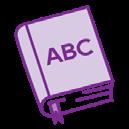
Definitions
Definitions of concepts to understand the content.

For the curious
Encouragement to do in-depth research about the content. Expand the activity and exercise to such an extent that learners are encouraged to explore. For gifted learners: expanded exercises. For Learners with Special Educational Needs (LSEN): explain the need to complete the basic questions to achieve a pass mark.

Activity
Questions to complete to test the learners’ knowledge of the completed lesson.

Core content
Emphasise the core of the content; in-depth explanation of a specific section of the lesson; learners must understand this content.

Exercise
To conclude the specific unit. Formative assessment.
SAMPLE
TERM 1
PHYSICAL EDUCATION, DEVELOPMENT OF THE SELF IN SOCIETY AND WORLD OF WORK
In this unit’s Physical Education, learners will focus on general fitness. They will get the opportunity to participate in physical activities and to realise the benefit of exercise.
Learners must spend at least 10 hours per term doing physical activities. That is 40 hours in total for the year. Spend at least one hour per week doing physical activities. They must always wear comfortable clothes and a good pair of training shoes, and exercise in a safe, spacious area like a park or a rugby field. Our physical health affects our emotional health, which is why Physical Education is a very important part of Life Orientation.
In this unit we will also focus on the formation of self-esteem and self-motivation. Learners will go through many emotional and physical changes during adolescence. It is important that they build their self-esteem and feel accepted by their peer group. This unit will help them develop additional life skills and emotional intelligence to manage challenges. They must apply their new life skills to further develop their potential. This will enable them to successfully tackle life’s challenges. We will also discuss sexuality, relationships and friendships.
The world of work is another topic we will look at this term. Learners will briefly revise the different learning styles and study methods we discussed in Grade 7, and then they will identify their own learning style so they can apply it to their own studies.
Learners can work through the lessons at a comfortable pace. At the end of each lesson, they will find an activity to assess their understanding. Some activities will test their insight while others will require them to apply what they have learned. Every lesson has a time indication, which is the recommended time in which to complete the lesson.

Learning aims
At the end of this unit, learners must be able to:
• recognise the safety issues for general fitness exercises and apply good judgement
• work out their own fitness programme and participate in it
• identify factors that affect the formation of self-esteem and self-motivation
• speak positively about themselves
• apply strategies and skills to develop their potential
• understand their sexuality
SAMPLE
• understand their friends’ and peer group’s sexuality
• identify acceptable ways of beginning and ending friendships and relationships
• develop problem-solving skills
• develop communication skills
• identify different learning styles.
LESSON 1: GENERAL FITNESS (10 HOURS)

Definitions
• Aerobic exercise: Aerobic exercise (exercise requiring oxygen) is any type of cardiovascular conditioning. Your breathing controls the amount of oxygen in your blood that reaches your muscles to help you burn energy and move.
• Balance exercise: A type of exercise that strengthens all the muscles that help keep the body upright.
• Stretching exercise: An exercise that stretches the muscles and improves your range of motion in the joints.
• Resistance exercise: An exercise that causes the muscles to contract against an external resistance, such as your own body weight, gravity, resistance bands, weights or dumbbells, to improve muscle strength and endurance.
Fitness activities safety precautions
Learners must always consider their safety when exercising. Things to consider:
• Who they exercise with – exercise with family, friends, neighbours or people with the same fitness goals.
• Where they exercise – choose a safe and pleasant environment to exercise, and avoid deserted areas. The area should be spacious.
• When they exercise – exercise early in the morning before school or late in the afternoon.
• Why they exercise – do they exercise to stay fit and healthy, or to lose weight?
• Their clothing – wear appropriate clothes and shoes for the exercise/activity.
• Exercise equipment – use equipment that is appropriate for the activity and in a good condition.
It is important that learners always drink enough water and stay hydrated. They must not exercise when ill. They must listen to their bodies, and stop and rest if they experience pain or discomfort while exercising.
Discuss the importance of warm-up and cool-down exercises with the learners. Work through the warm-up and cool-down exercises with them, as explained in the Study Guide, and discuss static and dynamic exercises.
Warm-up exercises
Neck
Shoulders and arms
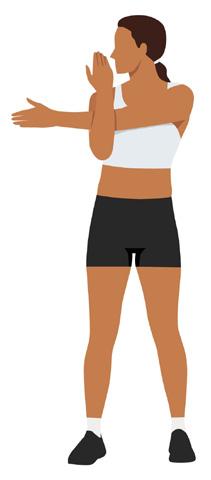
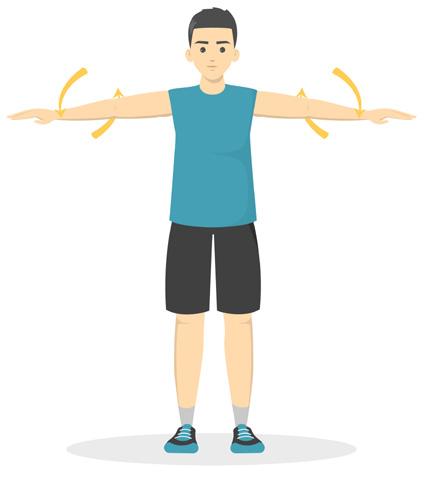
Lesson 1: General fitness (10 hours)
Waist, torso and sides
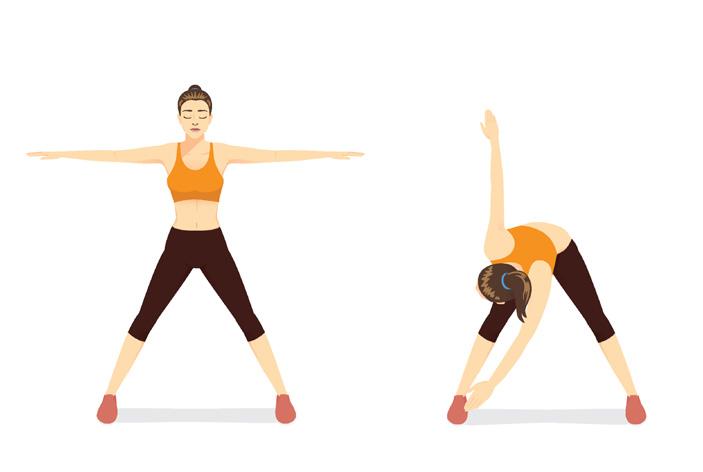
Legs
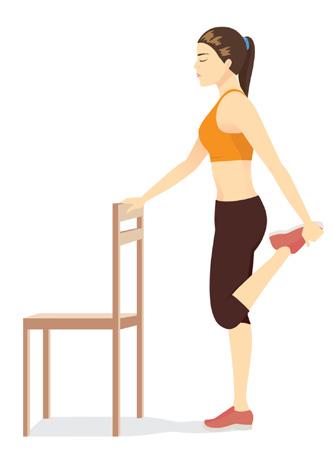
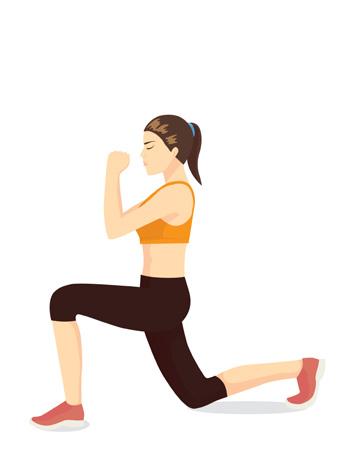

Cool-down exercises
Legs
SAMPLE
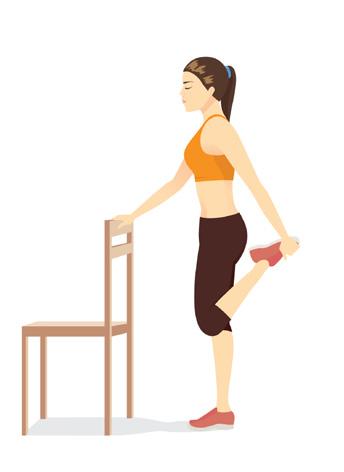


Your own fitness programme
Explain to the learners that they will learn how to develop their own fitness programme this term and that the facilitator will assess their participation in and execution of the activities.
Lesson 2: Self-concept and self-motivation (3 hours)
LESSON 2: SELF-CONCEPT AND SELF-MOTIVATION (3 HOU RS)

Definitions
• Goal: An aim or desired result, usually within a time frame.
• Individuality: The qualities that make you an individual. It differentiates you from others.
• Self-concept: The image you have of yourself.
• Self-motivation: Having the enthusiasm and drive to reach your goal.
• Unique: One of its kind.
How is one’s self-concept formed?
Explain to the learners what a self-image is. The image, whether positive or negative, that learners have of themselves, may not necessarily be the image others have of them. Discuss the factors that influence the formation of one’s self-concept and self-motivation:
• Family
• Friends
• The media
• Self-criticism
• Their experiences
• Their imagination
• Unrealistic expectations
Improve your self-concept
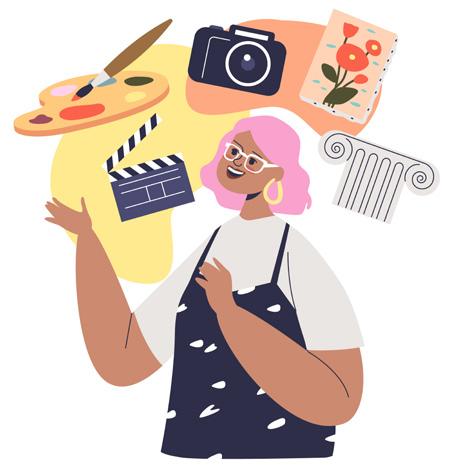
Talk to learners about goal-setting as a way of improving their self-concept. Use the scenario of Siya as an example of the four steps of goal-setting, so that they can understand how to apply it in their own lives.
Develop positivity
Discuss the importance of positivity and its advantages with learners. Explain to them that positivity is a choice that contributes to a positive view on life regardless of the circumstances.
SAMPLE
Identify your unique characteristics
Help learners identify their own unique characteristics by asking themselves these questions:
• Who am I?
• What do I like and what don’t I like?
• What are my strengths?
• What characteristics would I like to change?
• Do I surround myself with positive or negative people?
• What characteristics differentiate me from others?
Lesson 3: Concept: Sexuality (3 hours)
Cultivate your potential
Discuss personal potential with the learners. If learners can identify their talents and aptitude, they will have a better idea of their potential. Use examples of how they can identify and develop their potential.

For the curious
Learners must research any celebrity who overcame personal setbacks to become successful. Discuss how this person developed their potential.

Activity 1
Learners should make a collage of four things that affect their self-image. They must focus on material things and not on people. It can be anything that affects them positively or negatively, like cell phones, clothes, cars, etc. The collage must be half an A4 page. After finishing the collage, they must answer these questions:
1. What is your opinion of the items you used in the collage? Do you think you should allow these things to affect your self-image? Provide five statements that clearly explain your opinion. (5)
Learner’s own relevant answer and FIVE statements.
2. What do you think will happen if someone bases their happiness and self-image on material possessions? Name two consequences. (2) Learner’s own relevant answer.
3. Briefly explain your collage. Why did you choose these four things and in what way did each one affect your self-image? (8)
Learner’s own relevant answer. [15]
LESSON 3: CONCEPT: SEXUALITY (3 HOURS)

Definitions
SAMPLE
• Peer pressure: The influence that other people of your age and social group have on you to be respected and accepted by them.
• Sexuality: The combined characteristics that make an individual male or female. This includes a person’s sexual life, feelings, needs and activities.
• Values: Beliefs about what is right and wrong, and what is important in life.
What is sexuality?
Explain to learners what sexuality is and what it involves. Stress the fact that a good support system is vital so that they always have someone to talk to and share their feelings with.

Factors that influence sexuality
• Friends and peer pressure
Learners’ friends have their own view on sexuality. Their views are formed by their parents, family, culture, religion and community. A learner’s norms and values may be similar to their friends’ or completely different. Explain to learners that their decisions could be positively or negatively influenced by their friends. Peer pressure could also influence them to make poor choices just to feel accepted by their group.
• Family and community
Your family is the first place where you learn about the roles of males and females. Factors such as divorce, abuse and your parents’ relationship with each other can influence your view of sexuality. Studies have shown that teenagers who come from communities with a lower socio-economic status are more inclined to be promiscuous. This is because parents must often work long hours and children are thus left without supervision.
• Culture and religion
Sexual norms have changed with time. In some cultures, the topic of sexuality is considered taboo, so parents do not discuss it with their children. Some religions forbid premarital sex and consider it a serious offence punishable by law. In other cultures, women are required to prove their fertility by having a baby before marriage.
• Social pressure and the media
Discuss how the media (internet, social media, magazines, TV and radio) and role models influence learners’ self-concept and behaviour every day. The media often uses celebrities’ sexuality to convey a message and make their products seem more desirable. Marketers want to create a desire in people to be just like that celebrity, whether it be sexy, sporty or successful. The celebrity’s femininity or masculinity is used to influence people.
Learners should study these images of celebrities marketing fragrances:

SAMPLE


Discuss how this type of marketing influences learners’ teenage years. Explain that marketing and advertisements are usually deceptive and far from the truth. That is why many people are disillusioned when they buy the product and then realise it doesn’t make them feel the way the advertisement promised. Discuss the influence peer pressure has on sexuality.
Lesson 4: Relationships and friendships (3 hours)
Problem-solving skills
Discuss the importance of good problem-solving skills. Describe the necessary steps to solve a problem:
• If the problem looks too big, break it down into smaller steps. It is easier to manage it one step at a time.
• Ask advice from someone you trust.
• Set long-term goals to solve your problem.
• Decide how you are going to solve the problem – this is your action plan.
• Set your plan into motion to see if it is successful.

For the curious
Learners must research how many celebrities they recognise in advertising campaigns and how much they were paid. Do the learners feel that the celebrities are being exploited, despite earning so much for these advertisements?

Activity 2
Learners must choose any local or international TV series they like. They should paste or draw a picture of the series’ logo in their workbook.
They must then write a short essay of 100–150 words on the influence that programme has on teenagers. Do they think the situations in the series are realistic? Do they and their friends relate to it? Their own interpretations and opinions are important. They must clearly convey how the media influences teenagers. (10) They will earn marks for the following:
1. Introduction (2)
2. Content (6)
3. Conclusion (2) [10]
LESSON 4: RELATIONSHIPS AND FRIENDSHIPS (3 HOURS)

Definitions
SAMPLE
• Empathy: The ability to understand the feelings of another.
• Relationship: The interaction between two people.
Appropriate ways to initiate a relationship
Talk to learners about the role that relationships play in their lives. Their friends may become involved in romantic relationships, while they themselves may be perfectly happy to just have a group of friends. Stress the importance of waiting until they feel ready to become involved in romantic relationships. Discuss how the basis of a good relationship is honesty, respect and trust. It is much more important than someone’s physical appearance. Explain that it is normal for friendships and relationships to experience ups and downs. Learners must decide for themselves if their friends have more good than bad qualities. Their relationships should have a positive influence on them, never a negative influence.
Lesson 4: Relationships and friendships (3 hours)
Stress how important communication is in a relationship. Learners should be able to share their feelings with their friend and not feel embarrassed to talk to them. Explain how important it is that they just be themselves in a relationship. They should be considerate, show interest and not talk about themselves all the time.
Appropriate ways to sustain a relationship
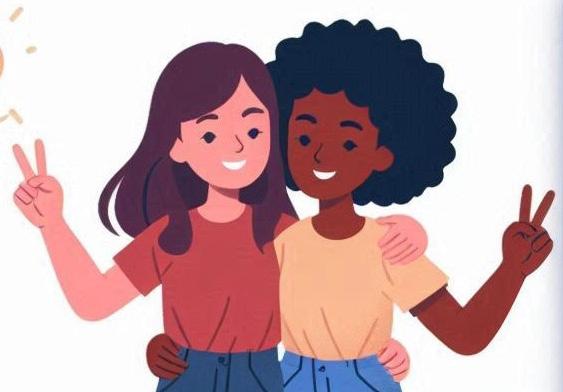
Discuss the most important aspects of a relationship, whether it be a friendship or love relationship:
• Always be honest.
• Trust your partner.
• Communication is very important.
• Be careful not to criticise.
• Do not let your partner down.
• Be a good listener.
• Stay independent.
Problem-solving skills: Appropriate behaviour in a relationship
Explain to learners that all relationships face challenges at some point and that they need good problem-solving skills to maintain a relationship. How will they know if there is a problem in the relationship?
• Their partner suddenly treats them differently.
• Their partner does not answer their calls or reply to their messages.
• Their partner goes out with other people.
• Their partner is not sensitive to their feelings.
Learners must be honest with their partner about their feelings, be sensitive to their partner’s feelings and listen to them. Together, they should decide to continue or end the relationship.
Appropriate ways to end a relationship
It hardly ever happens that both people want to end a relationship at the same time. Someone usually gets hurt. Discuss appropriate and sensitive ways of ending a relationship:
• Be honest about your reasons for wanting to end the relationship and your feelings.
• Take your partner’s feelings and circumstances into account.
• Communicate the message in a positive way.
SAMPLE
• Stick to your decision.

Activity 3
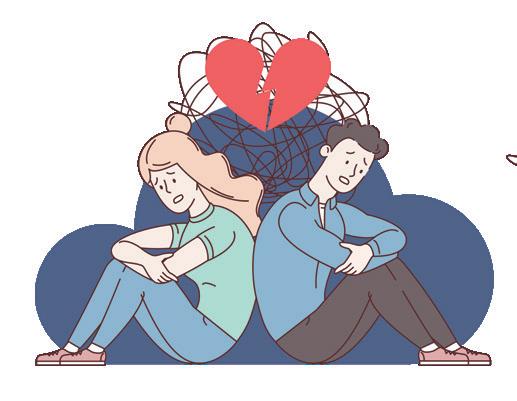
Learners must read the following and answer the questions. Meliha and Remzi met on an outing. Meliha thought Remzi had the most beautiful brown eyes. She immediately liked him. Remzi loved Meliha’s friendly and likeable personality. They started dating immediately. They spent all their time together. With time, Remzi started to miss his friends and started spending more time with them. Meliha didn’t like it and they started fighting about it often. Then Meliha met Ali. She realised she would rather date Ali than Remzi.
Lesson 5: Different learning styles (1 hour)
1. Name the qualities that attracted Meliha and Remzi to each other at the start of the relationship. Meliha thought Remzi had the most beautiful brown eyes. Remzi loved Meliha’s friendly and likeable personality. (2)
2. Do you think it was reason enough to start a long-term relationship? Motivate your answer. Yes/no. Learner’s own relevant motivation. (2)
3. Name two types of behaviour in the relationship that were inappropriate. Learner’s own relevant answer.
The answer could refer to poor communication between Meliha and Remzi, they did not remain independent, they did not always listen to each other, they hurt each other’s feelings, etc. (2)
4. Why do you think the relationship ended? Name two mistakes that stand out. Learner’s own relevant answer.
The answer could refer to poor communication skills, a lack of good problem-solving skills, etc. (2)
5. How do you think Meliha should go about ending the relationship? Name two strategies.
• Be honest about her feelings and her reasons for wanting to end the relationship.
• Take Remzi’s feelings and circumstances into account.
• Communicate the message in a positive way.
• Stick to her decision.
• Learner can name any two strategies from the Study Guide. (2)
LESSON 5: DIFFERENT LEARNING STYLES (1 HOUR)

Definitions
• Kinaesthesia: Knowledge of the position and movement of the parts of your body, which comes from sensory organs in the muscles and joints.
• Study methods: The methods you can use to memorise facts when studying.
The five learning styles
SAMPLE
Discuss the five different learning styles with learners:
1. Kinaesthetic
• They learn through movement and by doing activities, e.g. building something, acting, role playing or dancing.
• They do not learn best by looking and listening alone.
• They do not talk very much and rely on body language.
• They want to actively discover the world around them and never sit still for long.
• They prefer playing outside. They enjoy running and climbing, and have good coordination.
• They enjoy group activities.
• They enjoy touching and are very loving.
• They are sensitive and can easily feel hurt if someone treats them badly.
• They tend to have angry outbursts.
2. Visual
• They learn by looking at something.
• They recall images and diagrams.
• They enjoy drawing and designing.
• They enjoy art activities and visual games, e.g. playing games with flash cards.
• They do not have a large vocabulary and use short sentences when speaking.
• They tend to use incorrect word order when speaking.
• They can multitask.
• They do not like touching and are not very emotional.
• They do not understand others’ emotional outbursts.
• They remember activities better if they have seen it.
3. Auditory
• They learn by listening. They prefer listening to information instead of reading it.
• They can listen attentively for extended periods of time.
• They enjoy communicating with people and listening to their opinions.
• They do not value written information.
4. Linguistic
• They learn by reading and writing.
• They also learn by talking and listening.
• They enjoy debating.
• They enjoy telling and writing stories.
• They enjoy reading books and searching for information.
5. Logical/mathematical
• They learn by reasoning about the facts.
• They enjoy working with numbers.
• They learn by problem-solving.
• They learn by doing calculations, experiments and questioning facts.

For the curious
Learners must identify their own learning style/s and look for more information about it on the internet.

SAMPLE
Activity 4
Learners must complete the table.
Learning style You learn by Activities you enjoy Method/s you use to learn
Kinaesthetic
Visual
Auditory
Linguistic
Logical/mathematical

Exercise 1: Open book test
This exercise does not count for assessment.
1. Use images, photos and words to design an A4 poster that represents the following types of relationships (use these guidelines):
• Friendships with your peers.
• Relationship with your parents.
• Relationship with your siblings.
• Relationship with your teachers or facilitators.
• Relationship with your romantic partner.
• Relationship with your best friend/s. (7)
2. Briefly describe each relationship.
Learner’s own relevant answer, e.g. I have a close relationship with my best friend, we share the same values and most of the same interests. I can tell my best friend anything without feeling judged. We spend most of our time together during and after school. (7)
3. Describe how each relationship affects your self-esteem.
Learner’s own relevant answer, e.g. My relationship with my best friend has a positive influence on my self-esteem. My friend listens to me and encourages me in everything I do, as well as when I’m feeling down. (7)
4. Describe how each relationship influences your personal decisions.
Learner’s own relevant answer, e.g. I always take my best friend’s opinion into consideration when making decisions because my friend knows me well and has my best interests at heart. My friend also understands the pressure I feel to fit in with the cool crowd and helps me make the right decisions when I am not sure what to do. (7)
5. Why do you think it is important to have relationships with others? Name two reasons.
Learner’s own relevant answers.
SAMPLE
TERM 2
PHYSICAL EDUCATION, WORLD OF WORK, AND HEALTH, SOCIAL AND ENVIRONMENTAL RESPONSIBILITY
In this unit’s Physical Education, learners will focus on target games. They will get the opportunity to participate in physical activities and to realise the benefit of exercise.
Learners must spend at least 10 hours per term doing physical activities. They must always wear comfortable clothes and a good pair of training shoes, and exercise in a safe, spacious area like a park or a rugby field. In this unit, learners will also focus on the world of work. They will briefly revise the different learning styles and study methods from Grade 7, and then identify their own learning style/s so that they can apply it to their own studies.
We will then discuss the six different career categories, as well as the interests, skills and school subjects that go hand in hand with them. The six career categories are:
• Investigative
• Enterprising
• Realistic
• Artistic
• Conventional
• Social
Learners will also discuss the role that work plays in our country’s social and economic needs. How do workers contribute to the country’s social and economic prosperity? Why is it important for people to work and contribute?
Lastly, we will look at the social factors that influence drug abuse and how drug abuse affects a person in the long term. It is also important for learners to know where they can turn to for help if they or someone they know are struggling with drug abuse.

Learning aims
At the end of this unit, learners must be able to:
• recognise the safety issues associated with target games and apply good judgement
• play a target game and develop their own target game
• identify and apply their own learning style/s
SAMPLE
• identify the six career categories
• identify the importance and role of work in relation to South Africa’s social and economic needs
• identify the social factors that contribute to drug abuse.
Lesson 6: Target games (10 hours)
LESSON 6: TARGET GAMES (10 HOURS)
This term we will look at target games. We will learn how to use things as targets, how to work together and how to use the ball in different ways.
Target game safety precautions
As learners already know, it is important that they consider their safety when they exercise. When playing target games, other people are also involved, so their safety should also be considered.
Learners must remember to be aware of:
• who they exercise with
• where they exercise
• when they exercise
• why they exercise
• their clothing
• the equipment they use.
Learners should drink enough water and stay hydrated. They must not exercise while sick. They must listen to their bodies – they must stop or rest if they experience any pain or discomfort. Help the learners to work through the warm-up and cool-down exercises found in the Study Guide.
Warm-up exercises
Running back and forth
Neck







